📙📙 Cognitive Stimulation and Learning in Children with ASD
Cognitive stimulation is a highly complex and profound therapeutic and educational process aimed at enhancing and developing a person’s mental and cognitive abilities through the use of carefully structured, meaningful, motivating, and individually adapted activities. In the specific case of children with Autism Spectrum Disorder (ASD), this intervention becomes even more crucial and fundamental, as it seeks to strengthen basic and higher cognitive functions such as sustained and selective attention, short- and long-term memory, planning and organizational skills, the development and improvement of verbal and non-verbal language, effective resolution of everyday problems, and cognitive flexibility to adapt functionally to different contexts and new situations. Stimulation must be approached holistically, integrating emotional, social, and communicative aspects to ensure a harmonious and lasting learning and development process.
The cognitive stimulation approach must be fully individualized and personalized, carefully and respectfully considering each child’s specific interests, natural strengths, preferences, areas of difficulty, and unique needs. There is no single formula or universal method; rather, success depends on the ability to integrate these activities fluidly and naturally into the daily routine in a way that aligns with family and school life. It is essential to foster the child’s active and voluntary participation through play, body movement, emotional interactions, and intrinsic motivation, promoting a safe, warm, and stimulating environment that encourages constant learning and personal discovery.
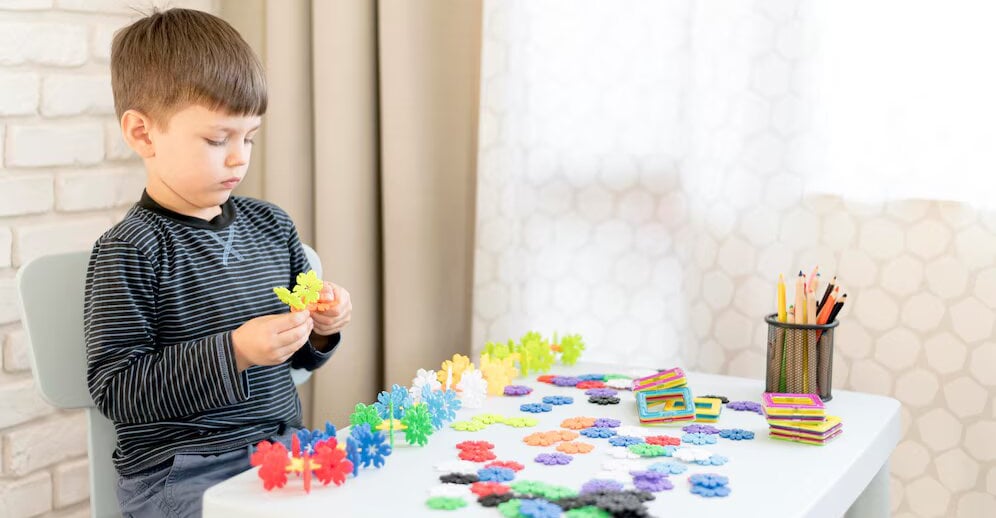

🔹 🔹 Why stimulate the mind from early childhood?
During the early critical years of life, the human brain has a high and surprising plasticity, meaning it can adapt, reorganize its neural connections, and form new synapses with a speed and ease that decreases over time. This period is a unique window of opportunity to intervene and enhance cognitive, emotional, and social development. In children with ASD, leveraging this brain plasticity through early intervention strategies is essential to maximize their potential, facilitate the acquisition of fundamental skills, and reduce the barriers the disorder may present. Appropriate stimulation during this stage can make the difference between smoother development and greater difficulty in facing future challenges.
📌 Key benefits of early stimulation include:
Stimulating and facilitating the acquisition of both verbal and non-verbal language through adapted and personalized means that support effective communication.
Improving focus, sustained attention, and shared attention with others, encouraging social interaction and collaborative learning.
Reinforcing the development of logical thinking and deep understanding of cause and effect, fostering problem-solving skills with autonomy.
Promoting emotional self-regulation, helping children recognize and manage their emotions in different situations, improving overall well-being.
Increasing motivation and interest in learning and exploring the environment, creating a virtuous cycle that boosts cognitive and social development.
💡 Practical tip: It is advisable to use positive reinforcement, such as frequent verbal praise, favorite songs, stickers, or symbolic rewards, to keep motivation and engagement high during stimulation activities, making learning fun and meaningful for children.
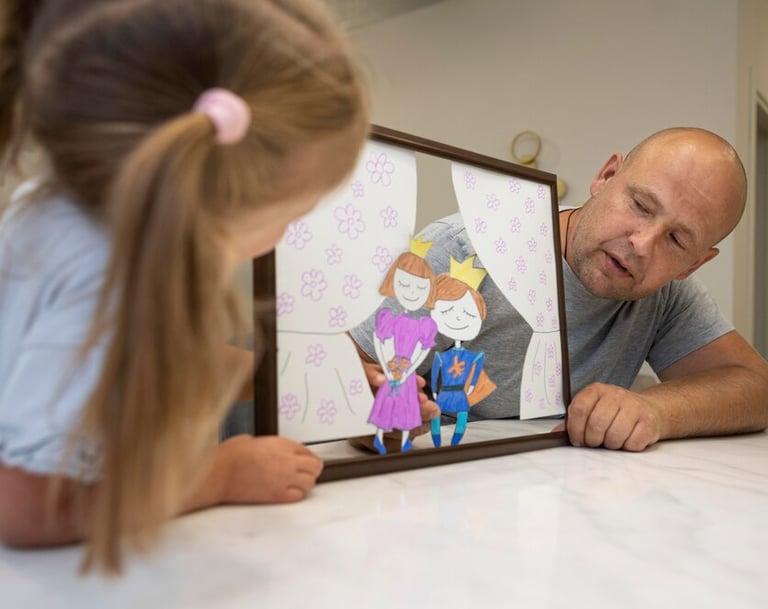

🔹 🔹 Activities to develop attention, concentration, and inhibitory control
Executive functions, including attention, concentration, inhibitory control, and working memory, are essential for children to perform tasks efficiently, follow complex instructions, and adapt appropriately to new situations and changes in their environment. For children with ASD, these functions often require specific and systematic work to support their development and prevent difficulties in these areas from affecting their performance and well-being.
🧠 Suggested activities to implement in a fun and dynamic way:
"Simon Says"-type games with visual or motor variations to stimulate sustained attention and impulse control.
Sorting and organizing cards or images by thematic categories (such as animals, fruits, everyday objects) to promote visual discrimination and mental categorization.
Auditory exercises to listen to and repeat sound sequences using simple musical instruments or interactive apps, strengthening auditory memory and concentration.
Object search games in complex images, like the popular “Where’s Waldo?”, to stimulate attention to detail and perseverance.
Turn-taking games using songs, spinners, or dice to practice patience, active waiting, and emotional regulation.
💡 Helpful tip: Alternating between high-energy and quieter activities helps prevent sensory overload and maintain interest while respecting each child’s individual pace and needs.
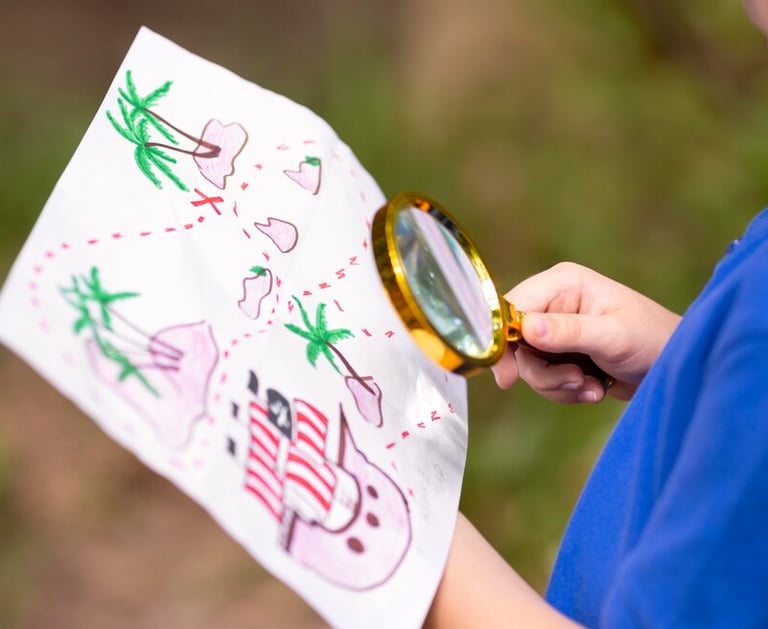

🔹🔹 Stimulation through symbolic and socio-emotional play
Symbolic play is much more than just a recreational activity: it is a key tool that allows children to represent real-life situations and experiences, understand different social roles, develop empathy, and practice logical and temporal sequencing of events. This type of play greatly contributes to socio-emotional and cognitive development, facilitating the integration of complex learning in an accessible and motivating format.
🎭 Play-based proposals to encourage this stimulation include:
Role-playing games simulating everyday scenarios like a supermarket, hair salon, school, or kitchen, where children can experience different social roles and responsibilities.
Creating and telling stories using puppets, stimulating imagination, verbal expression, and emotional understanding.
Using cardboard boxes or other recycled materials to build settings like a house, car, or spaceship, encouraging creativity and group interaction.
Dramatizing well-known stories with costumes and props to work on narrative memory, body expression, and emotions related to the stories.
💡 Key tip: Deliberately include emotions in play, for example by asking “How does the teddy bear feel? Why is he sad?” to promote emotional identification, recognition, and regulation—essential components of emotional intelligence development.


🔹🔹 Language stimulation using visual aids
For many children with ASD, the visual channel is the main and most effective route for learning and communication. Therefore, using images, pictograms, visual sequences, and other graphic resources is essential to facilitate comprehension, activity anticipation, and both verbal and alternative expression—especially for those with oral language difficulties.
📸 Useful tools to enhance language include:
Adapted stories and narratives with pictograms accompanying the text to improve comprehension and maintain interest.
PECS (Picture Exchange Communication System) boards that offer an augmentative and alternative communication system to facilitate message exchange.
Visual calendars and illustrated sequences that organize daily tasks, promoting predictability and autonomy.
Interactive apps designed with images and sounds that encourage multisensory and playful learning.
💡 Practical tip: Clearly name and repeat objects and actions while pointing to the images to foster the association between language and image, reinforcing memory and communicative development.
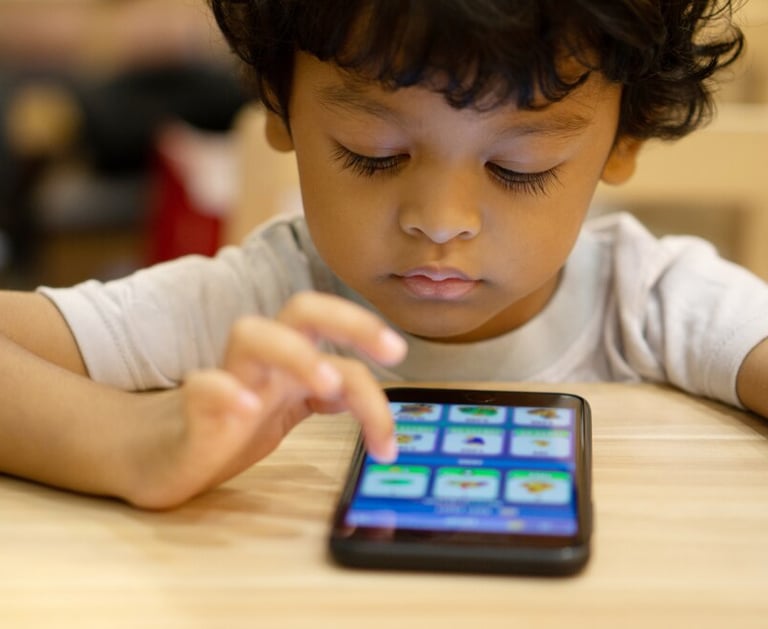

🔹 Structured cognitive games
Board games or manipulatives with simple and clear rules provide an excellent opportunity to work on essential cognitive functions such as attention, working memory, logical reasoning, planning, and problem-solving in a fun and motivating way.
🎲 Recommended games for this stimulation include:
Memory games with images or sounds that promote retention and recognition.
Dominoes with colors, shapes, or animals, encouraging classification and sequential reasoning.
Visual or tactile bingo games that train concentration and mental agility.
Shadow-matching games that develop visual discrimination and logical association.
Threading activities with colored patterns or number sequences that stimulate coordination and sustained attention.
💡 Valuable tip: Use visual timers to signal the start and end of each game to reinforce the “start-end” concept of an activity, helping children understand time and structure.
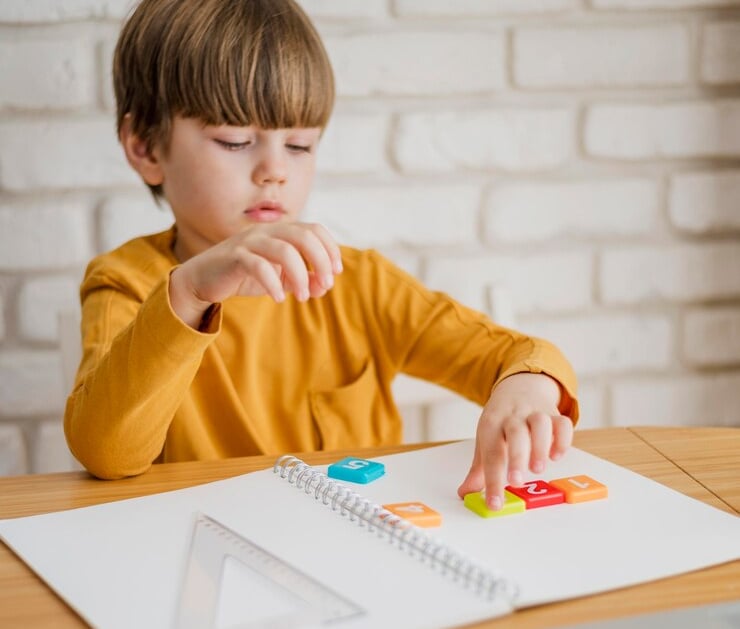

🔹 🔹 Incorporating the body: learning through movement
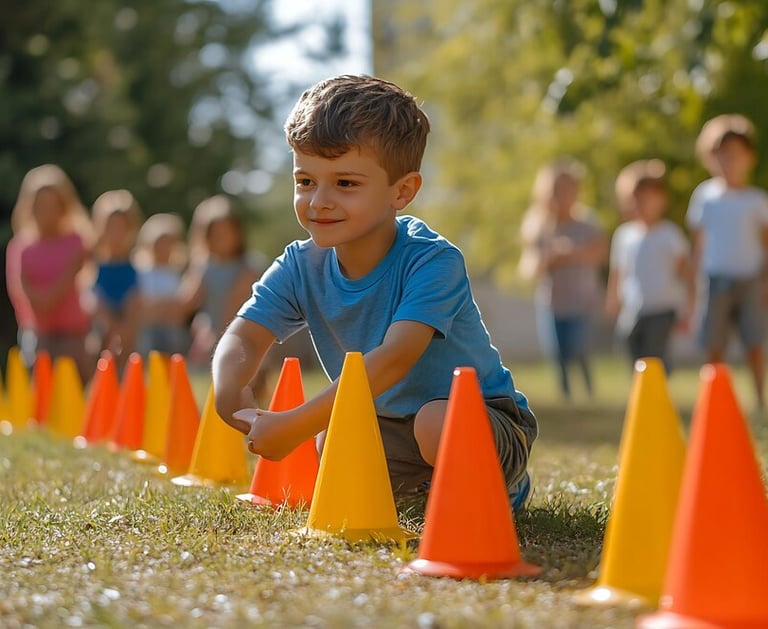

Learning should not be limited to sitting still in a static environment. For many children with ASD, using the body and movement is fundamental for reinforcing abstract concepts, regulating emotions, stimulating different brain areas, and increasing motivation to learn. Incorporating motor activities with cognitive goals enhances overall development.
🏃 Activities that combine movement and learning:
Motor circuits with cognitive stations where children must count, recognize letters, or imitate sounds, integrating motor skills with cognitive processing.
Word-building games by jumping on letters painted on the floor, linking physical activity with letter and word recognition.
Guided dances with songs indicating specific movements, promoting coordination, rhythmic memory, and body expression.
Outdoor activities like searching for objects of the same color or shape, encouraging exploration, observation, and interaction with nature.
💡 Tip: Include movement moments before cognitively demanding tasks to improve focus and reduce anxiety or hyperactivity.
🔹 🔹 Visual Routines as Tools for Organization and Predictability
Daily routines with visual support are essential tools for children with ASD, as they help reduce the anxiety caused by unexpected changes, promote autonomy, and ease the orderly and predictable transition between activities, providing structure and security throughout their day.
📅 Recommendations for implementing effective visual routines:
Use routine boards with images, pictograms, or movable symbols that represent each activity or step of the day.
Include visual clocks, either hourglasses or color-coded digital timers, to help understand the duration and timing of each task.
Incorporate “pause zones” or calming activities within the routine, allowing the child to self-regulate and rest when needed.
Anticipate changes with clear images and explanations so the child can be emotionally and cognitively prepared for new situations.
💡 Tip: Reviewing and going over the routine at the beginning and end of each day reinforces a sense of security, understanding, and achievement in the child.
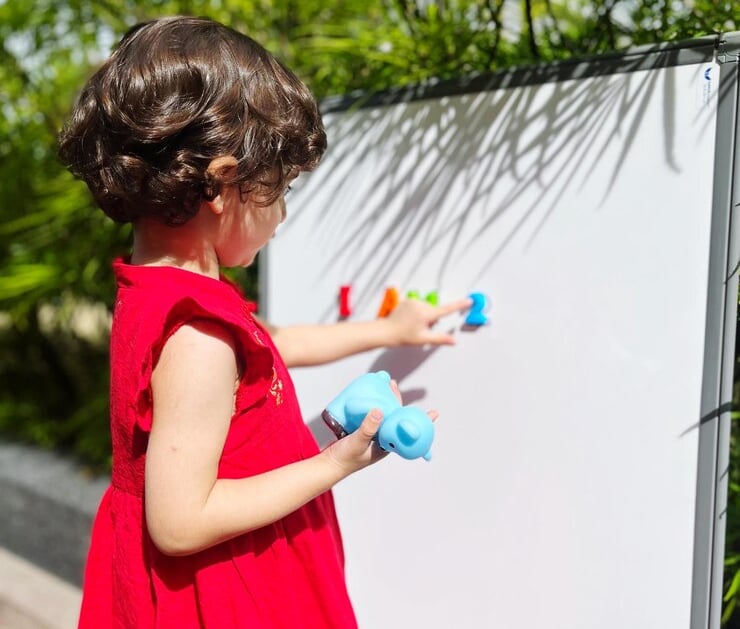

🔹 🔹 Stimulation in Natural and Everyday Contexts
The everyday environment offers countless valuable opportunities to stimulate cognitive functions without needing special materials or formal activities. Learning can be part of daily play, family life, and household chores, making it constant, contextual, and meaningful.
🌿 Practical ideas for natural stimulation:
Count and add the steps while walking to the park or school, introducing math concepts in a fun and simple way.
Name, classify, and describe fruits and vegetables while grocery shopping, promoting vocabulary and categorization.
Sort clothes by type, color, or season, incorporating organization and logical reasoning.
Cook together by following simple recipes with pictograms, encouraging attention, sequencing, and teamwork.
Search for and describe natural sounds during walks or outdoor activities, stimulating auditory perception and attention.
💡 Important tip: Include the child in simple everyday decisions, such as choosing between two options, to strengthen language, autonomy, self-esteem, and sense of belonging.
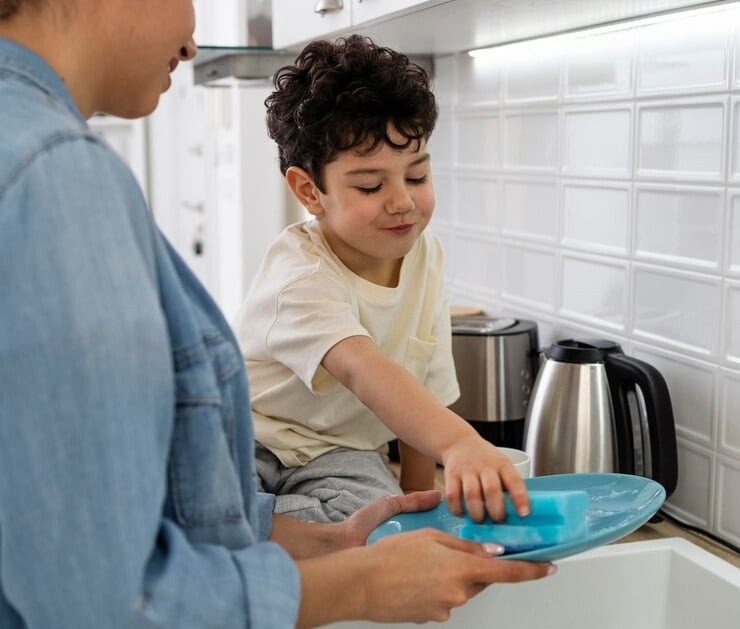

💫 💫 Building Bridges Toward Learning
Cognitive stimulation is not about increasing task quantity or demanding more from children, but rather designing activities that genuinely spark their natural curiosity, activate critical thinking, boost self-confidence, and nurture the emotional and respectful bond between adults and children. In the case of children with Autism Spectrum Disorder (ASD), it is especially important that these experiences are respectful, personalized, and centered on their interests, strengths, and individual pace.
Through creative play, visual routines that offer security, accessible language, and support based on affection and patience, it’s possible to build strong bridges between each child’s unique inner world and the surrounding environment. The key lies in turning each ordinary moment—from sorting toys by color to imagining a kitchen adventure together—into a real and meaningful opportunity to enrich not only the mind but also the heart.
✨ To accompany is not just to teach; it is to observe with full attention, offer quality time, support through frustration with patience, and celebrate every achievement, no matter how small it may seem. What today seems like a simple game may become tomorrow’s mastered skill. What is achieved with help today may be the first step toward autonomy and independence.
Because child development doesn’t follow a single path or a uniform rhythm, each child has their own timing, their particular way of learning and communicating. And when that timing is respected, when that path is walked with empathy, understanding, and love, everything blooms in a wonderful and genuine way.
🌱 Always remember that the most important thing is not to arrive quickly, but to arrive together. With patience, presence, and tenderness, every learning moment leaves a deep and lasting mark on the soul and mind of a child.


🔹 Michael Phelps
🏅 The most decorated Olympic swimmer in history
🧠 Diagnosis: ADHD (Attention Deficit Hyperactivity Disorder)
📌 He has also been associated with traits from the Autism Spectrum (ASD).
✨ Achievements:
🥇 28 Olympic medals (23 gold)
🌍 26 World Championship titles
💥 Over 39 world records
💬 “There are no limits. The only limit is me.”
🧩 Free Resource for Families and Professionals
We're gifting you a PDF activity kit, ideal for children with Autism Spectrum Disorder (ASD). It includes cutout cards, games to stimulate attention, coloring activities, playful dynamics, and much more.
📚 This material has been compiled from various autism communities with the goal of sharing, supporting, and enriching learning through love and inclusion.
💖 Download it for free and start enjoying it today!
📥
Are you a Professional or Do You Provide Services Related to ASD?
At MiRutaTEA, we're developing a new section where therapeutic companions, psychologists, speech therapists, psychopedagogues, specialized teachers, and other professionals can showcase their services through our app and website.
🧩 What Will You Be Able to Offer?
Therapeutic services, school support, or stimulation.
Workshops, group activities, or intervention proposals.
Links to your social media or professional website.
Contact information so families can easily find you.
💙 How to Join?
We'll soon launch a low-cost monthly subscription system so you can be part of our community. In the meantime, you can complete the contact form and tell us about your work.
🚀 Join a Network Designed to Connect Families with Professionals Committed to the Inclusion and Well-being of Individuals with ASD.
🔗 One Click Makes a Difference
Follow us on social media and help us reach more families with information about autism and alternative communication.
📲 Your support means a lot! 👇
💙 At MiRutaTea, we believe in the power of every voice.
Your experience can support, inspire, and help someone feel less alone.
🧩 Click the button and join the blog: read, share, and be part of the conversation.
This space is yours too.
